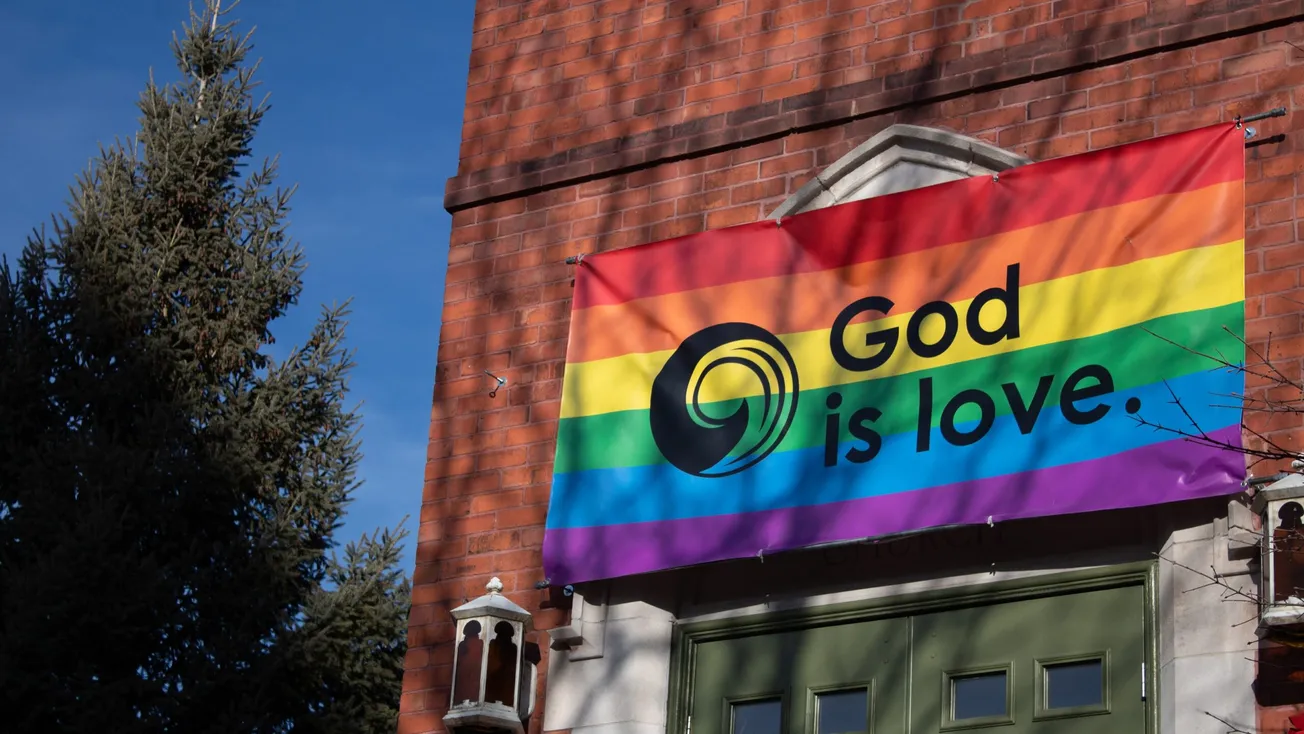Michael Cook
Michael Cook is editor of Mercator
When Americans hear of The King’s Speech, they probably think of the Oscar-winning 2010 film about George VI. But the King – now Charles III – still delivers The Speech. This year it caused an uproar. Not over what he said, but over what he failed to say.
He did not say that Rishi Sunak’s government was going to ban gay conversion therapy. Stonewall, the UK’s leading LGBTQ+ lobby group was outraged. Its CEO, Cat Dixon, declared: “This was the final opportunity for this UK Government to protect LGBTQ+ people from the abuse and torture that has afflicted generations of LGBTQ+ people in the UK and which continues to this day.”
Lecturers from the University of Birmingham chimed in, saying that: “Britain is increasingly isolated in this position amongst comparable nations, with fervent disapproval from international bodies. Canada, France, New Zealand and at least a dozen other countries have enacted legislation banning these practices.”
The controversy suggests two things. First, a large number of Brits believe that the idea that something called “conversion therapy” is vicious and harmful. Second, a large number of Brits believe that this is bollocks.
Across the Atlantic, Americans are also split. About half the states have banned conversion therapy for minors; about half haven’t.
Like other LGBTQI+ issues, the passionate and divisive debate over so-called conversion therapy is poorly understood by the public. Forests have been felled to produce mountains of papers in academic journals, but basic issues are poorly researched. And this includes, astonishingly, the biggest issue of all – does “conversion therapy” cause suicide?
Suicide and suicidality are the Big Berthas of this dispute. LGBTQI+ researchers claim that helping someone escape from unwanted sexual attraction is literally life-threatening. There is, they say, a serious and well-documented risk of self-harm and suicide. Last week President Biden reaffirmed his Administration’s “opposition to harmful so-called ‘conversion therapy’” in proclaiming National Child’s Day.
Let’s tackle this thorny issue in three stages: What is conversion therapy? Does it really make people suicidal? And what accounts for the vehemence of academic activists?
Defining conversion therapy
First, there is no agreed definition of conversion therapy. Even the name changes. A more precise term used by academics is “sexual orientation change efforts” (SOCE). Nowadays ‘conversion therapy’ is a catch-all term used in the media.
A generation ago some counselling centres did use aversive techniques, electric shock, or ‘boot camp’ punishments to ‘cure’ homosexuality – but also juvenile delinquency and drug abuse. Those methods proved counterproductive and were rejected long ago. Perhaps they are still being used in Saudi Arabia or Ghana – but not in the US or the UK.
So if there is no physical violence involved, what’s the problem?
Opponents argue that even psychoanalysis and other talking therapies are still a subtle form of violence. An article in the journal Women & Criminal Justice contends that “SOCE, in all their forms, contravene basic human rights, guaranteed by international human rights conventions, even when they involve consenting adults.”
That last phrase – “even when they involve consenting adults” – is puzzling. Aren’t they treading on basic freedoms here?
According to a population study by the Williams Institute, an LGBT think tank at UCLA, over a quarter of sexual minority persons in the US reported that they had tried to stop being attracted to persons of the same sex, and 10 per cent agreed with the statement, “If someone offered me the chance to be completely heterosexual, I would accept the chance.”
Why shouldn’t same-sex attracted adults investigate a different lifestyle? Self-destructive behaviours like suicide or drug abuse or listening to K-Pop are not illegal in democratic societies. What makes sexual orientation change different?
Nonetheless, it is widely believed by LGBTQI+ academics and activists that the very suggestion that sexual orientation can or should be changed is both wicked and impossible. Even “‘soft’ practices violate the right of members of sexual minorities to live a dignified life free of humiliation,” said the authors of the article in Women & Criminal Justice.
This is why, for instance, the Australian state of Victoria passed a law which criminalises “counselling, psychology or psychotherapy, formal behaviour-change programs, support groups, prayer-based approaches and exorcisms” aimed at changing or suppressing someone’s sexual orientation or gender identity. None of those things constitutes the “abuse and torture” that Stonewall mentioned.
SOCE and suicide
Where is the evidence that conversion therapy causes suicide?
Amazingly, until recently, there was very little. To be sure, suicidality and suicide are higher amongst sexual minorities, but proof that this was due to SOCE was elusive. Research surveys were nearly all based on small non-random samples or personal anecdotes.
However, in 2020 John Blosnich, of UCLA, and colleagues published what promised to be a killer paper. Unlike the underpowered studies which preceded it, he extracted data from the massive Williams Institute study. He found that “sexual minorities exposed to SOCE had nearly twice the odds of lifetime suicidal ideation, 75 per cent increased odds of planning to attempt suicide, and 88 per cent increased odds of a suicide attempt with minor injury”.
Scary stuff! And as four out of five of the SOCE experiences involved a religious counsellor. Blosnich warned that the dangers were far too great to justify exemptions for faith-based SOCE.
His paper has been very influential. The American Psychological Association published a book in 2022 called The Case Against Conversion Therapy citing his research. The UK Equality Office’s report on conversion therapy cited Blosnich’s findings repeatedly and supported a ban.
Then came the pushback. Blosnich’s paper was examined by Paul Sullins, a sociologist at the Catholic University of America. He detected a serious problem and in 2022 he published a devastating critique in a major journal, the Archives of Sexual Behaviour.
According to Sullins, Blosnich had reported “lifetime” suicidal behavior, but he failed to mention that most of this occurred before SOCE therapy, and thus could not possibly have been caused by SOCE. By including pre-SOCE suicidal behavior as if it were a result of SOCE, Blosnich had overstated the negative results.
The link between SOCE and suicide was, in short, fake news.
Worse still, at least from Blosnich’s perspective, Sullins found that Blosnich’s data showed precisely the opposite. For those who had engaged in SOCE as adults, all measures of suicidality decreased. The risk of a suicide attempt was even reduced by 81 per cent.
Amazingly, for all forms of suicidality, the percentage of persons who attempted suicide was lower following SOCE than with no SOCE. In other words, ‘conversion therapy’ worked.
Blosnich’s and Sullins’s arguments are highly statistical and hard for a layman to follow. But Sullins makes sense. Many people claim that SOCE has helped them to change. Their lived experience has to become part of the narrative. Up to now they have been completely ignored, their lives erased, and their voices cancelled.
Sullins’s conclusion is that banning SOCE is almost criminal. He told Mercator:
Imagine a study that found that most persons using anti-depressive drugs also have had depressive symptoms, thereby concluding that persons ‘exposed’ to anti-depressants were much more likely to experience depression, and recommending that anti-depressants therefore be banned.
This imagined study would have used the same flawed logic as Blosnich et al’s study, with invidious consequences for persons suffering from depression.
By flawed logic, Blosnich et al (and several other similar studies) have gotten the direction of causation exactly backwards. It isn’t that people go to SOCE and then become more suicidal than others, but that people who are already more suicidal than others go to SOCE to get help – and, by the way, they often are helped.
The tragic result of misguided attempts to restrict or ban SOCE treatment would be to deprive sexual minority persons of a valuable resource to reduce suicidality.
Blosnich and his allies, of course, have not taken this lying down. They bombarded Sullins’s analysis and called for its retraction. They pointed out that major medical associations accepted the link. But Sullins has not backed off. “No matter how many official reviews and pronouncements may concur,” he says, “it is simply not the case that a suicide attempt made years before SOCE exposure can be a result of that future exposure.”
Furthermore, he pointed out that some of the LGBTQ+ researchers themselves had acknowledged the weakness of studies about SOCE. One of his critics, Judith Glassgold, published a paper last year in which she found that: “I was unable to identify any methodologically sound studies to evaluate whether SOCE changes sexual orientation. For example, none of the published studies were experiments in which specific treatments were adequately tested.”
Understanding LGBTQI+ fury
Both sides of the debate acknowledge that SOCE is not always successful. Sullins published a paper in 2021 which found that some men with unwanted same-sex attraction found it helpful. Others didn’t. Horses for courses, perhaps. Sullins says:
SOCE therapy, as it is practiced today, does not seek out happy gay persons, but is prepared to respond to troubled persons who seek help, who often may be gay. Nor does it try to turn a gay person straight. It is open to that outcome, if that is a goal for the client, but SOCE practitioners attest that their goal is to help persons resolve disabling psychological distress or trauma. …
Many persons who seek SOCE therapy do so in order to help them live in accord with religious convictions that prohibit homosexual activity. They do not aspire primarily to live a heterosexual life, but a holy life, whether or not they continue to be sexually attracted to persons of the same sex.
So why are LGBTQI+ academics so vehemently opposed to SOCE, even to gentle counselling?
To answer this, there is no better evidence than a paper by two academics from the University of Copenhagen, Jenna Marie Strizzi and Ezio Di Nucci. Their position is that homosexuality is incontestably a Good Thing and that trying to escape unwanted desires is both ineffective and immoral. “This is already in and of itself a violation of both sexual rights and human rights, independent of any positive or negative consequences on well-being,” they write.
That last phrase is astonishing. Even if a person wants to change, even if he feels comfortable with a change, even if the change is life-changingly positive, he (or she) is wrong to do so.
Fundamentally, activists believe that the mere suggestion that homosexuality is not normal is an attack on their own personal integrity and safety and the whole LGBTQI+ lifestyle. The idea that somewhere out there, someone is attempting to break loose from homosexual desires appears to terrify them.
Accordingly, Strizzi and Di Nucci argue that: “it is unethical to treat something that is not a disorder or pathology.” To which Sullins responds:
Would these public health experts then oppose abortion care, since pregnancy is not a disease? Would they outlaw all cosmetic plastic surgery? How about hair restoration or wrinkle reduction treatments? Or can they recognize that some conditions, normal in themselves, can be received by some persons as benign and by others as highly problematic?
Whether homosexuality is a disorder is an important question, but it’s not relevant to the issue at hand. What lawmakers are being asked to support is this: should people be free to seek help for unwanted same-sex attraction? The answer is clearly Yes. Building your own life is a basic human right. But from Stonewall to Strizzi and Di Nucci, what LGBTQI+ activists are demanding is less freedom, less diversity, and more groupthink. As in the Mafia, no one who enters that brotherhood can ever leave.









